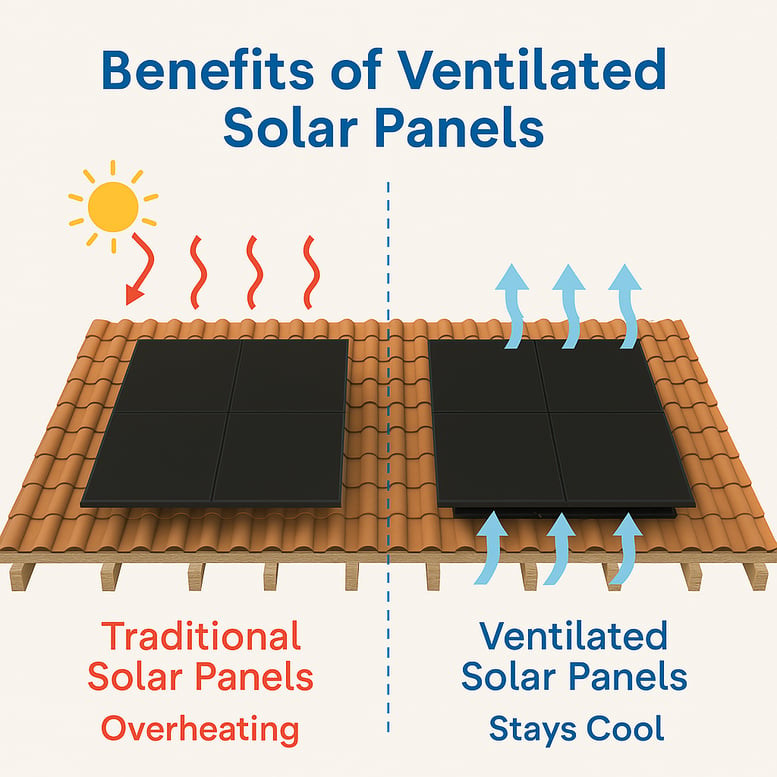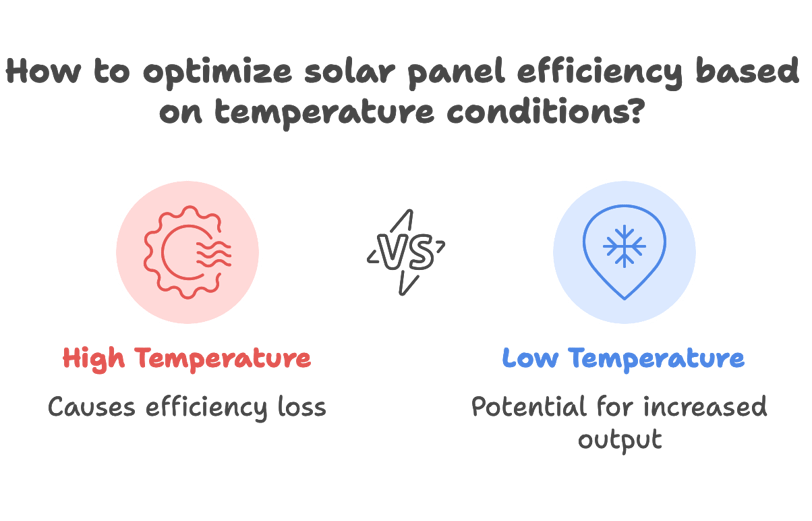How Ventilated Solar Panels Boost Efficiency: The Science Behind Cooler PV Modules
hagu
1/13/2025


Harnessing the Power of Ventilated Solar Panels: Enhancing Efficiency through Effective Heat Management
In the quest for sustainable energy solutions, solar panels have emerged as a cornerstone technology, converting sunlight into electricity. However, an often-overlooked factor influencing their performance is temperature. Elevated temperatures can significantly reduce the efficiency of photovoltaic (PV) cells, making thermal management a critical consideration in solar panel design and installation. One effective strategy to mitigate heat-related efficiency losses is the implementation of ventilated solar panels.
The Impact of Temperature on Solar Panel Efficiency
Solar panels operate optimally at standard test conditions, typically 25°C (77°F). However, real-world conditions often lead to higher operating temperatures, especially in direct sunlight. For every degree Celsius increase above 25°C, a typical crystalline silicon solar panel’s efficiency can decrease by approximately 0.3% to 0.5% . This decline is attributed to increased internal carrier recombination rates within the PV cells, reducing their ability to convert sunlight into electrical energy .
The Role of Ventilation in Enhancing Solar Panel Performance
To counteract the adverse effects of heat, integrating ventilation into solar panel installations has proven beneficial. By allowing air to circulate behind the panels, excess heat is dissipated, maintaining a lower operating temperature and thereby enhancing efficiency. This natural ventilation can be achieved by creating an air gap between the panels and the mounting surface, facilitating convective heat transfer .
Benefits of Ventilated Solar Panels
1. Increased Efficiency: Maintaining lower operating temperatures through effective ventilation can significantly boost the energy conversion efficiency of solar panels.
2. Extended Lifespan: Consistent exposure to high temperatures can accelerate the degradation of solar panels. Ventilation helps in mitigating this effect, thereby prolonging the panels’ operational life.
3. Improved Return on Investment (ROI): Enhanced efficiency and durability translate to higher energy yields over time, improving the overall ROI for solar installations.
Implementing Ventilation in Solar Panel Installations
Effective ventilation can be incorporated through thoughtful design and installation practices:
• Mounting Systems: Utilizing mounting systems that elevate panels slightly above the roof surface creates an air gap, promoting natural airflow and heat dissipation.
• Orientation and Tilt: Adjusting the tilt angle of solar panels not only optimizes sunlight exposure but also facilitates airflow beneath the panels.
• Use of Ventilation Components: Incorporating specific ventilation components, such as ventilated facades or specialized mounting brackets, can enhance airflow and cooling efficiency.
Conclusion
As the demand for renewable energy sources continues to rise, optimizing the performance of solar panels becomes increasingly important. Addressing thermal management through the implementation of ventilated solar panels offers a practical solution to enhance efficiency, extend lifespan, and maximize the return on investment. By integrating effective ventilation strategies, we can ensure that solar technology continues to advance as a reliable and efficient cornerstone of sustainable energy solutions.
For more detailed information on the impact of temperature on solar panel efficiency and the benefits of ventilation, consider exploring the following resources:
Note: The information provided in this article is based on current research and industry practices as of March 2025.


